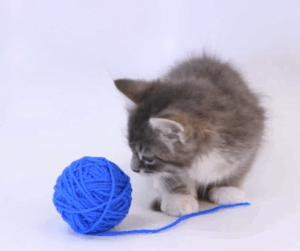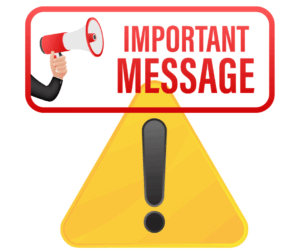Oops! My Website’s Down – Now What? The Case for Having a Backup Plan When the Internet Breaks
Today, thousands of businesses worldwide felt the impact of the internet’s version of a power outage. Thanks to a major hiccup in Cloudflare’s Key-Value (KV) storage system—a component used by many websites for fast, scalable performance—even some of the internet’s most reliable sites were offline or sluggish. Companies need to have a backup plan, and social media can serve as a valuable backup plan.
It wasn’t just websites that stumbled. Platforms like MailChimp and Constant Contact (you know, the services we trust with our precious email lists and announcements) were also affected. Suddenly, email marketing was out. Your website? MIA. Your clients? Probably wondering if you’ve ghosted them.
So, what do you do when the web throws a digital tantrum?
Let’s talk backup plans—and why social media might just be your knight in shining pixels.
When the Web Stops Working: A Reality Check
The internet is amazingly magical… until it’s not.
For many business owners, especially those who rely on online bookings, e-commerce, or timely communications, a website outage can feel catastrophic. Customers can’t place orders. Clients can’t schedule appointments. Leads might bounce away forever. And worst of all—your team might not even realize something’s wrong until they get a “Hey, your site’s down?” message from a confused client.
Today’s Cloudflare outage was a perfect reminder: tech can fail. And when it does, you need a way to stay connected with your audience.
Social Media as a Backup Plan – Really?
In a world where TikTok dances and kitten memes reign supreme, it’s easy to forget that social media is also a powerful business communication tool.
When everything else goes dark, your Facebook, Instagram, LinkedIn, or X (formerly Twitter) profiles can be a lifeline.
Why Social Works:
-
They’re still up – Platforms like Meta (Facebook & Instagram), LinkedIn, X (formerly Twitter), and even TikTok were unaffected by today’s web-wide fumble.
-
People are already there – Your audience is likely already scrolling (because work was slow for many due to outages). You’re not interrupting their day—you’re joining it.
-
Instant reach – With a quick post, story, or reel, you can instantly alert thousands of followers about the situation and what to expect.
-
It’s two-way – Unlike a static site, social allows for real-time feedback and communication. You can answer questions and calm concerns in the comments or DMs. For us, it was telling clients that their websites were OKAY and NOT HACKED!
Example post from today:
Yes, our website is down due to the massive Cloudflare issue affecting tons of sites globally. We’re still here, and everything’s okay! Have questions? DM us or email [email protected]. Thanks for hanging in there with us! 💻💪 #TechGremlins #StillHere #WebsiteIsAliveJustHiding
✉️ Email Wasn’t Even Safe! ✉️
You may be thinking, “No biggie—I’ll just send out an email blast to update everyone.” Normally, this is a solid Plan B. But today? Even email giants like MailChimp and Constant Contact hit turbulence. Delivery delays, login issues, and stuck email queues made it clear: you can’t always rely on your inbox lifeline.
That’s what makes social platforms even more valuable during these times. They’re decentralized, varied, and largely unaffected by issues plaguing infrastructure providers like Cloudflare or AWS.
The “Website Down” Emergency Plan (with a Splash of Humor)
Want to be ready for the next internet armageddon? Here’s a fun and functional checklist to keep your cool:
✅ 1. Pin Your Social Posts
Make your outage updates the first thing people see. Pin it to the top of your Facebook page, your Twitter/X feed, and even your Instagram highlights.
✅ 2. Have a Social Media Crisis Template Ready
Pre-draft messages for different platforms. Keep it clear, on-brand, and a little light-hearted. (No need to go full doom and gloom.)
✅ 3. Know Your Login Info
It’s always at the worst time that someone forgets the Instagram password. Keep a secure document or password manager updated with credentials so you can act fast.
✅ 4. Redirect Domain If Possible
Sometimes, you can temporarily point your domain (yourcompany.com) to a landing page hosted somewhere else—or even to your Facebook page—until the main site is back.
✅ 5. Keep Calm and Meme On
A little humor goes a long way. Let your audience know that even though your site is down, your brand’s spirit is not.
👥 Real Brands, Real Reactions
The companies that stood out today weren’t the ones scrambling in silence—they were the ones hopping on social, talking directly to their followers, and showing up in the face of chaos.
Even big brands took to X and LinkedIn with jokes, apologies, and helpful updates. That kind of transparency builds trust—and shows you’re human, not just HTML.
Pro Tip: If your team has a strong social media presence, leverage your brand voice. If you’re snarky, be snarky. If you’re heartfelt, be heartfelt. Just be present.
💡 Lessons Learned
-
The internet breaks. No one is immune, not even tech giants like Cloudflare and Crowdstrike.
-
Social media is more than likes and selfies—it’s an emergency communication tool.
-
Having a plan means you don’t panic. Or at least you panic with purpose. We were moving pretty fast around here!
- Social media as a backup plan, is a plan.
🚀 Let Today Be Your Wake-Up Call
If today’s outage caught you off guard, use it as a jumping-off point to build your plan.
Write your go-to social update. Make sure your team knows where to post it. Test login credentials for all major platforms. Talk to your developer about emergency domain redirects. And most importantly—stay human in how you respond.
Because at the end of the day, your audience isn’t looking for a perfect website. They’re looking for a brand they can trust—even when the internet breaks. And using social media as a backup plan demonstrates you care, especially when the post is immediate to the crisis.
So the next time the internet goes haywire, you’ll already be one step ahead.
With a plan.
And maybe a meme.
In the dark about Today’s Crisis? What happened today?
-
Cloudflare’s KV issue today caused chaos across thousands of sites and services, including MailChimp and Constant Contact.
-
Social media platforms stayed live—and became the best way to communicate with clients and customers.
-
Your emergency outage plan should include pre-written posts, social access, domain backup options, and a calm (or funny) tone.
-
Don’t disappear—show up, be transparent, and build trust through it all.
Want help creating your “Website Down Survival Kit”? Let’s chat. We’ll build the posts, templates, and strategy so your brand shines—no matter what breaks. We share our personal numbers JUST IN CASE the outage is REALLY big. We’ll leave it at – texts were flying today, and we LOVE talking to our clients — even in times of extreme stress!
Call us today 832-327-3230 and let’s chat about your emergency plan 😅


 They’re still up – Platforms like Meta (Facebook & Instagram), LinkedIn, X (formerly Twitter), and even TikTok were unaffected by today’s web-wide fumble.
They’re still up – Platforms like Meta (Facebook & Instagram), LinkedIn, X (formerly Twitter), and even TikTok were unaffected by today’s web-wide fumble.